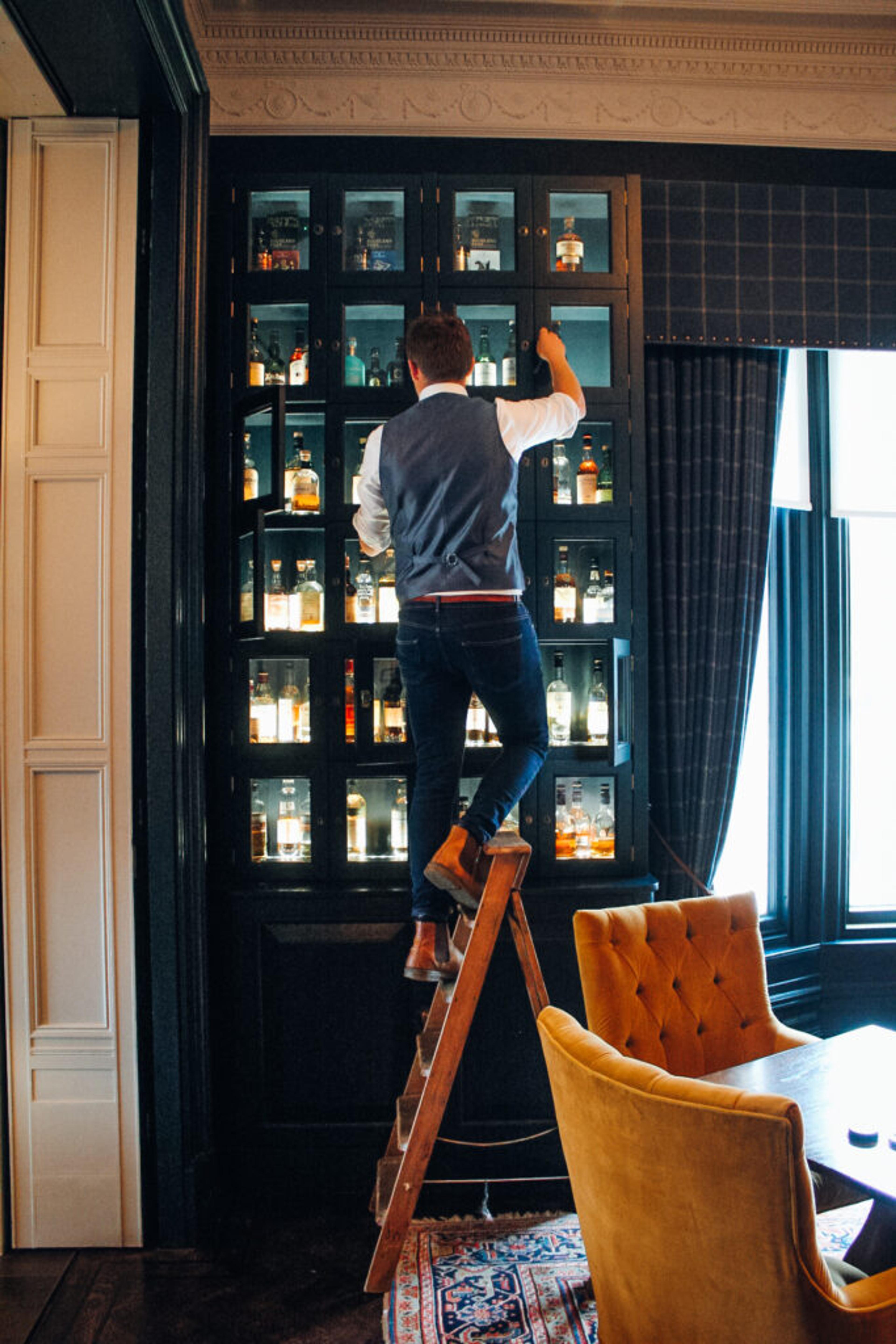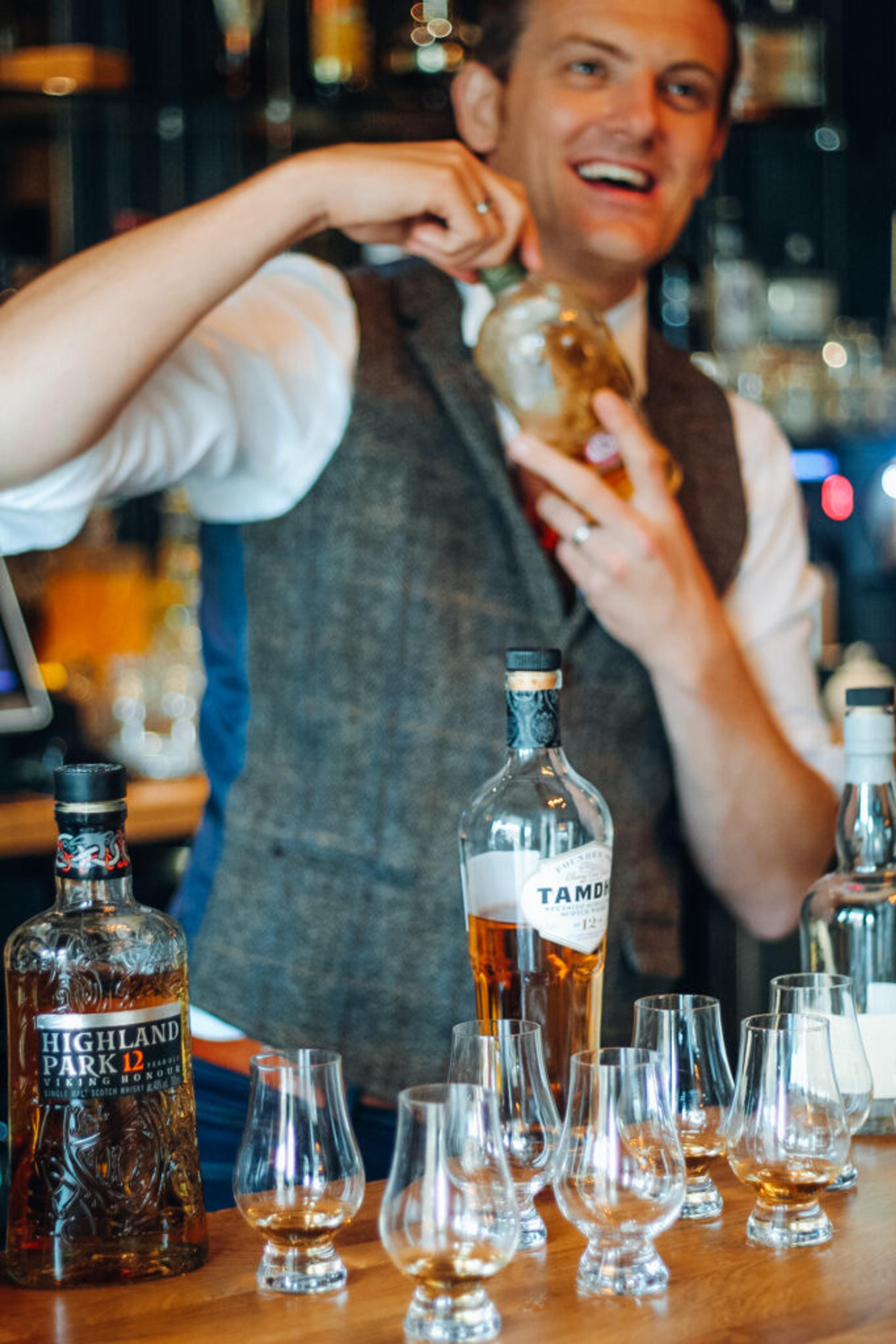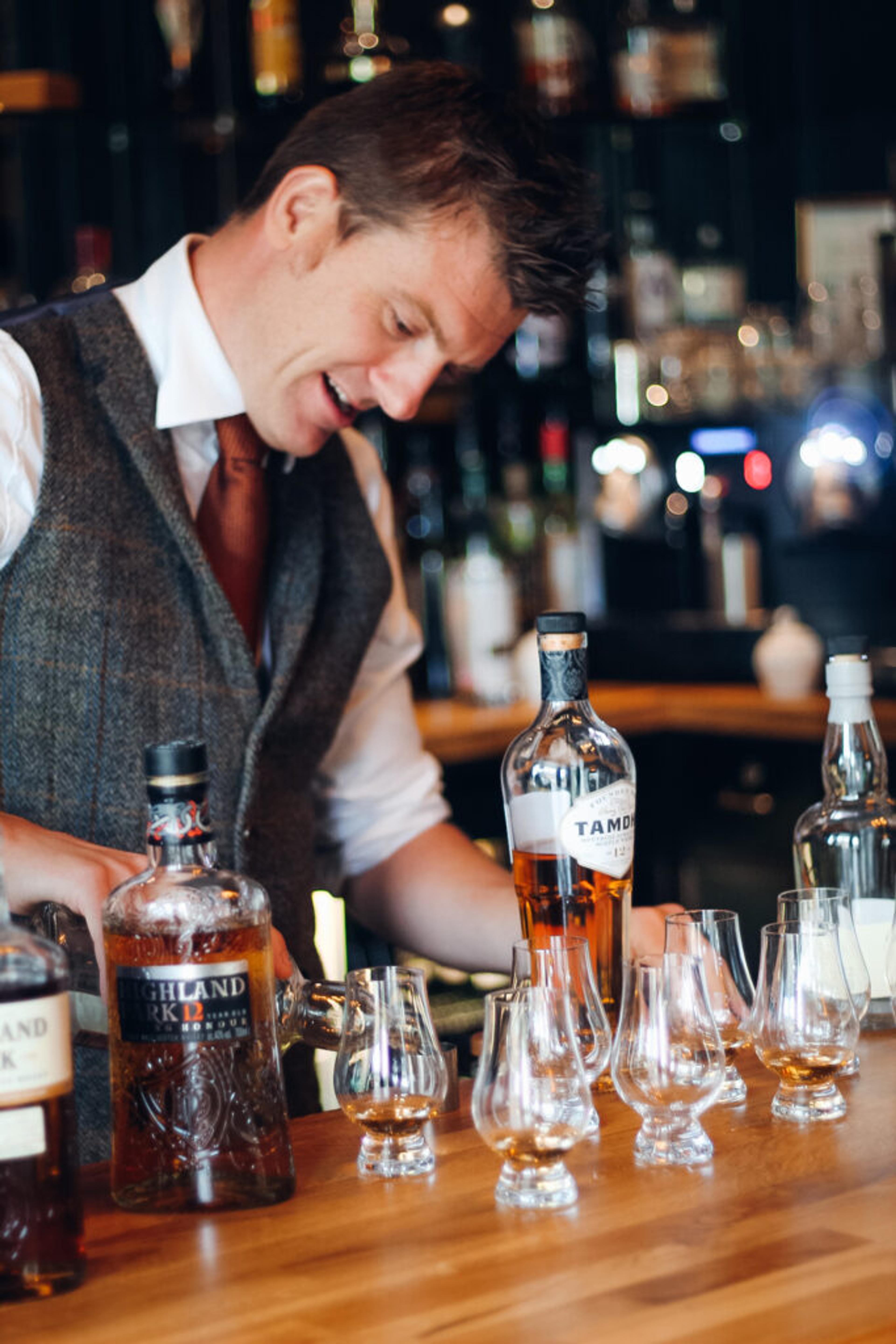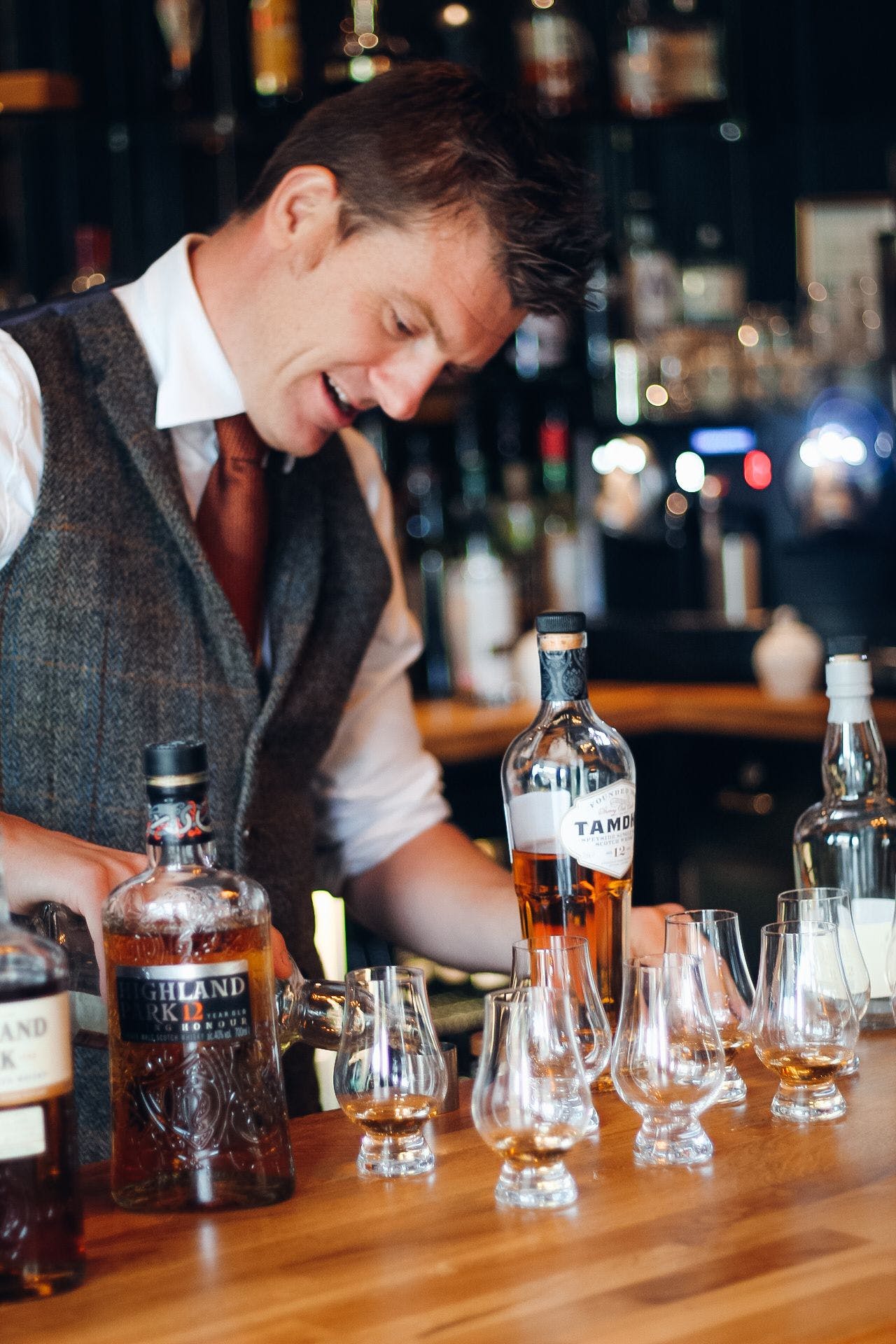70 whiskies and an alcohol novice. What could go possibly go wrong?

“Don’t worry, I do this all the time” John Hindle, resident whisky maestro, assured me as he climbed the ladder to the Dunstane Houses whisky cabinet. Yes, ladder. He needs it to access their eye-watering collection of over 70 different Scottish malts. Containing rare whiskies, hard to find drams, and a 40 year old malt that has only been enjoyed by a small handful of guests, the whisky cabinet is something to behold. I was staying at The Dunstane Houses for a review piece I was writing about the hotel, the tasting being part of the experience. However, this was one of those rare occasions when a specific part of a trip is so special, I would be doing both John and the hotel a great disservice by not celebrating it separately.
I had been rather nervous about the tasting for a few different reasons. First of all, I only started drinking alcohol 10 months ago and, even so, I only do so for work. This segues nicely into the second reason: the fear that I’m going to drink several whiskies, start smashing chairs, and never work in food or travel writing again. There’s a newspaper resting on the end of the bar and I can envision tomorrow’s “FOOD WRITER RUINS EVERYTHING FOR EVERYONE” headline already. This is not good. “Whisky tasting isn’t about getting hammered” John assures me, “it’s about understanding the flavours, the nuances, the folklore. There’s more to a good dram that just getting drunk”. I know he’s right, but that twinkle in his eye says he knows that’s part of the fun.
Whisky, smoke, and honey
We get the party started by discussing what I want from the tasting. Explaining my lack of knowledge and experience with this particular drink, John recommends his Introduction to Whisky session. Pouring 6 different malts into tasting glasses, he excitedly tells me about the extensive collection they have on offer at The Dunstane, and the exclusive contacts they have with distilleries across the country. “You won’t believe how long it took me to get this” he beams proudly, showing me a bottle of 40 year old malt he managed to acquire after a long period of careful negotiations. Imagine that: 40 years of waiting, of gentle patience, of hope that the finished product will be worth the time invested in it. What happens if it’s no good or has gone bad. “That’s the risk they take” he explains, “that’s why it’s so expensive. Tastes bloody good though”.

We pull up a pew in the bay window and John sets out six whiskies for us to try. My previous experience of whisky had not been good, the general sharp hit of alcohol overwhelming and unpleasant. All whiskies had tasted the same to me. Turns out, I wasn’t drinking good whisky. “The difference between blends and single malts is night and day. There are some exceptional blends out there, but the common supermarket blends can be pretty bad” he explained. And so began my education in whisky. It transpired that whisky isn’t a generic, one size fits all drink for sailors and people suffering with bad coughs. It’s nuanced, and complex, and if you take the time to explore and have it explained to you properly, you come to appreciate a wide range of different flavours depending on process and provenance. We start with Glenkinchie, a 12 year old malt with creamy vanilla notes. There should be a dispenser of this in every ice cream van. John explains how I should take the time to enjoy the aromas before letting it hit my palate, maybe adding water to relax the flavour if it’s a little strong. No need, my whisky supping amigo, I’m hooked on our first glass.
Next up is Edradour, a 10 year highland malt from Scotland’s smallest distillery in Pitlochry. Smooth and buoyant with notes of caramel, I can see why this is a first timer favourite. We move on to Tamdhu, a 12 year Speyside malt left to mature in first fill sherry caskets for a fruitier flavour. “First fill caskets mean you really get to experience the residual fruitiness from the sherry” John explains, looking bemused and impressed as I knock that one back like Ribena. I realise his opening gambit was spot on: we’re three whiskies deep and each one has tasted completely different from the last. It’s clear that I should have been trying quality whiskies in the past as opposed to the ones that come in the giant bottle you end up keeping your spare change collection in.
We move on to a dram of Hazelburn, a 10 year old whisky distilled in the Campbeltown region. Creamy, slightly smokey, but still packing a punch, this was one of my favourites of the day. John told me about the distillery and how three different producers are using the same premises, divvying up the year into production segments to save waiting around. There really isn’t anything this man doesn’t know about whisky and its makers. I’m starting to suspect that if I asked what the distiller’s accountant’s dog was called, he would not only know the name but have a photo of said dog on his phone. His knowledge is that of someone who has clearly worked in the industry for years, his passion for the subject only growing over time.

Our penultimate taster is Highland Park, a 12 year matured whisky from Orkney. Featuring a light heat and delicate notes of heather, this was again, completely different from those that fell before it. “The flavour can be affected by so many things” John explained. “The seasons, the plants, even the water. It all plays a part”. He then went on to tell me about our final whisky, Ardbeg, from Islay. A peaty whisky that smells like a bonfire but tastes like something else entirely, this was the most intriguing tipple of the day. “I used to hate peat based whisky, but this changed it for me” he enthused whilst pouring a glass. Ardbeg was arguably the most complex of everything we tried during our session. Smoky, with hints of burning heather and a depth unlike the other whiskies we had tried, I enjoyed the Ardbeg so much that I wrote a recipe using it within half an hour of finishing the tasting. We finished with more whisky chat, with John providing me with some whisky recommendations like bookers lumberyard to try at home. Given the revelation that whisky clearly enhances my creative process, I’ll certainly be trying these in future.
How to book:
You don’t have to stay at The Dunstane Houses in order to book a whisky tasting with John, but I highly recommend that you do for two reasons: it’s a stunning hotel, and it’s easier to float back to your room rather than having to head home. Whisky tasting sessions start at £40p.p, more information can be found at https://www.prideofbritainhotels.com/hotels/dunstane-house/


Comments are closed.